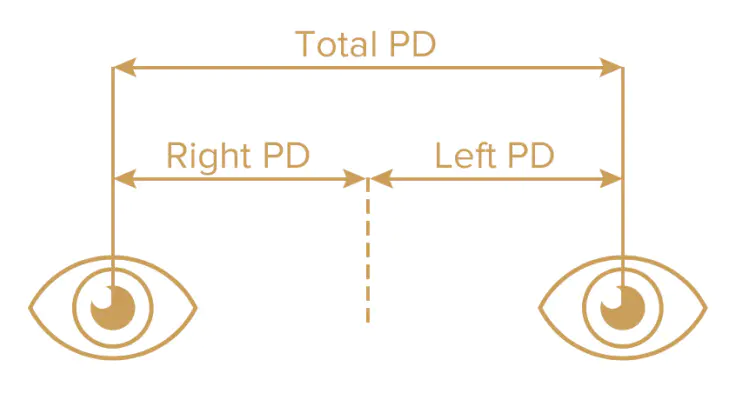Unlock the Secret to Perfect Eyewear: Mastering Your Pupillary Distance!
When it comes to selecting the perfect eyewear, one often-overlooked factor is pupillary distance (PD). This crucial measurement plays a significant role in ensuring that your glasses fit comfortably and provide optimal vision clarity. But what exactly is pupillary distance? Simply put, it is the distance between the centers of your pupils, measured in millimeters. An accurate PD measurement is essential for aligning the lenses correctly with your eyes, which can make a world of difference in your overall visual experience. Whether you're purchasing glasses online or visiting an optician, knowing how to measure your PD can help elevate your eyewear game and enhance your visual comfort.

Understanding Pupillary Distance
Pupillary distance is a fundamental measurement in the field of optometry. It directly affects how lenses are positioned in your frames, which in turn influences the quality of your vision. When lenses are aligned with your pupils, it allows for better focus and reduces the strain on your eyes. If your PD is not measured accurately, you may experience discomfort, distortion, or even headaches when wearing your glasses. It's important to understand that each person's PD is unique, and having this measurement ensures that your eyewear is tailored specifically to you. This significance is often highlighted by friends who have experienced the difference firsthand, praising how the right PD transformed their visual comfort.
How to Measure Your Pupillary Distance
Measuring your pupillary distance can be done in a few simple steps, whether you're doing it at home or with the help of a professional. If you choose to measure at home, having a friend assist you can lead to better results. To ensure accuracy, it's recommended to take multiple measurements. If you're unsure, visiting an optician can save you time and provide peace of mind. Here are some methods to consider:
Measuring at Home
To measure your PD at home, you will need a ruler and a mirror. Start by standing about 20 centimeters (8 inches) away from the mirror. Hold a ruler against your brow, ensuring that it is level. Close your right eye and look straight ahead with your left eye, noting where the center of your pupil aligns with the ruler. Then, switch eyes, closing your left eye and looking straight ahead with your right eye. The distance between the two measurements is your pupillary distance. Repeat this process a couple of times to confirm accuracy, as lighting and positioning can affect the results. Many of my friends have shared their experiences of measuring at home, and they often emphasize the importance of taking the time to get it right.
Getting Professional Help
If you're looking for the most accurate measurement, visiting an optician is a great choice. During your appointment, the optician will use specialized tools to measure your PD precisely. This process typically takes just a few minutes, and you can expect them to ask you to look straight ahead while they take the measurement. Many people find that having a professional measurement alleviates any concerns about accuracy, and they leave the appointment feeling more confident in their eyewear choices. A friend of mine once mentioned how the clarity she experienced after having her PD measured professionally was unparalleled compared to her previous attempts at home.
Using Your Pupillary Distance for Eyewear Fitting
Once you've successfully measured your pupillary distance, you can use this information to select the right frames and lenses. The PD measurement is particularly important for ensuring that the optical centers of the lenses are aligned with your pupils. This alignment is essential, especially for different types of lenses such as single vision, bifocals, or progressive lenses. Each of these lens types has varying focal points, and having the correct PD helps in achieving the best visual outcome. If your PD is off, you may find that you need to strain your eyes more, leading to discomfort and fatigue. Understanding the relationship between your PD and your lenses can empower you to make informed decisions when choosing your eyewear.
Key Takeaways on Measuring Pupillary Distance
In conclusion, measuring and understanding your pupillary distance is a crucial step in the eyewear selection process. From enhancing visual comfort to ensuring the best possible fit for your lenses, taking accurate measurements is essential. Whether you choose to measure at home or seek professional help, remember that your PD is unique to you and plays a key role in your overall visual experience. So, take the time to measure your pupillary distance accurately, and set yourself on the path to enjoying clear, comfortable vision with stylish eyewear.




